Powerful conservation tech tools are gathering more data in the field than ever before. But without equally powerful and effective data management and processing tools, that data - no matter how groundbreaking or interesting - will not be able to reach its full potential for impact.
Data management can sometimes seem intimidating to conservationists, especially those just getting started in the world of conservation tech or experimenting with new data collection methods. While every community member's workflow and preferred data management and processing methods may be different, this group can serve as a resource to explore what works for others, share your own advice, and develop new strategies together.
Below are a few WILDLABS events dealing with datasets collected from various conservation tech tools:
Nicole Flores: How do I get started with Wildlife Insights?
Jamie Macaulay: How do I analyse large acoustic datasets using PAMGuard?
Sarah Davidson: Tools for Bio-logging Data in Conservation
Whatever conservation tech tools you work with, and whatever your preferred data management methods, we hope you'll find something helpful and effective in this group when you become a member!
No showcases have been added to this group yet.
Universidad San Francisco de Quito
Biologist/Professor focusing on carnivore conservation in Ecuador
- 0 Resources
- 0 Discussions
- 11 Groups
- @VirgiIorio
- | She, Her
- 0 Resources
- 0 Discussions
- 3 Groups
- @serena.le
- | she/her
Conservation tech enthusiast
- 0 Resources
- 0 Discussions
- 24 Groups
- @lqmeyers
- | he/him
Graduate Student Researcher interested in computer vision, agro-ecology, and sustainability.
- 0 Resources
- 1 Discussions
- 4 Groups
- @Amanda83
- | She
I love to help out
- 0 Resources
- 1 Discussions
- 11 Groups
- @lampros
- | He/Him
I am a Data and Remote Sensing Analyst specializing in programming (R, Python) at Monopteryx, contributor to open-source projects related to machine-, deep-learning, remote sensing and interested in Biodiversity
- 0 Resources
- 4 Discussions
- 10 Groups
- @srankin
- | she/her
NOAA Fisheries
Bioacoustics researcher with the National Oceanographic and Atmospheric Administration (NOAA).
- 0 Resources
- 2 Discussions
- 16 Groups
Conservation Biologist


- 2 Resources
- 16 Discussions
- 6 Groups
My research focuses on using Next-Generation Sequencing (NGS) to study endangered species, including carnivores, chiropterans (bats), and lizards, as well as their microbiomes.
- 1 Resources
- 4 Discussions
- 19 Groups


- 0 Resources
- 31 Discussions
- 4 Groups
I am the project coordinator of the Wildlife Forensic Fund. We help combat wildlife crime by funding the training of first responders to preserve evidence and take them to court successfully. We are eager to connect with wildlife forensics enthusiasts.

- 4 Resources
- 1 Discussions
- 4 Groups
- @divey06
- | She/Her
- 0 Resources
- 0 Discussions
- 4 Groups
Careers
The SMART Partnership is hiring a Program Director to oversee all aspects of the partnership's operations
21 February 2024
We invite applications for the third Computer Vision for Ecology (CV4E) workshop, a three-week hands-on intensive course in CV targeted at graduate students, postdocs, early faculty, and junior researchers in Ecology...
12 February 2024
The primary focus of the research is to explore how red deer movements, space use, habitat selection and foraging behaviour change during the wolf recolonization process.
10 February 2024
Funding
With $60,000, $30,000, and $10,000 grants available for 14 outstanding projects, the support of engineering and technology talent from Arm (the leading semiconductor design company), and access to the world’s biggest...
1 December 2023
TagRanger® is a state-of-the-art wildlife finding, monitoring and tracking solution for research, conservation and environmental professionals. With superior configurability for logging data, reporting location and...
23 November 2023
A secure platform designed for those working to monitor & protect natural resources. Insight facilitates sharing experience, knowledge & tools to increase efficiency & effectiveness in conservation. By...
7 November 2023
handling one-value-per-line formats for burst and continuous data
27 October 2023
With the rising threats to biodiversity such as wildlife crime, climate change and human-wildlife conflict today, wildlife monitoring technologies have become vital to study movement ecology, behaviour patterns, changes...
25 October 2023
Have you created a successful career in tech and are ready to do something good with your skills and experience? If yes, then join Open Earth's Earthshot mission to build open source digital systems and solutions to...
25 October 2023
Careers
The Institute of Zoology (IoZ), the research division of the Zoological Society of London (ZSL), is seeking to fill three new permanent positions by recruiting outstanding early-career researchers as Research Fellows (...
20 October 2023
Enrollment for Luke Negoita's Basics of R (for ecologists) course is opening in a few days, but this will be the LAST TIME (for a while) that he'll be admitting new students into the course. If you've needed to learn R...
20 October 2023
Listen in on our interview with Mara Elephant Project’s Tracking Manager, Wilson Sairowua, as he explains how MEP is using software, geofencing and drone technologies to resolve human-elephant conflict across Maasai...
20 October 2023
August 2025
October 2025
event
event
November 2025
event
February 2025
event
January 2025
event
87 Products
Recently updated products
| Description | Activity | Replies | Groups | Updated |
|---|---|---|---|---|
| Hi @CourtneyShuert We support NOAA with AI for individual ID for belugas (but from aerial and from lateral surface too). If some of our techniques can be cross-applied... |
|
AI for Conservation, Data management and processing tools | 6 days 18 hours ago | |
| Hello Eugene, I just tried your service:Was wondering how possible will it be to have the option to upload a second image and have a comparison running to let the user know if... |
|
AI for Conservation, Camera Traps, Data management and processing tools, Software Development | 1 week ago | |
| You could just throw out that data, but I think you'd be doing yourself a disservice and missing out on some interesting insights. Are you training the AI with just pre-COVID... |
|
AI for Conservation, Animal Movement, Data management and processing tools, Human-Wildlife Coexistence | 1 week 6 days ago | |
| Do you thinks an AI could do that ?GitHub - naturalsolutions/ecoSecrets: ecoSecrets is a web application which enables users to manage their camera traps data |
|
Data management and processing tools | 2 weeks ago | |
| Wondering if anyone here has come across good guidance/frameworks/best practices/etc. for baseline conservation data management (beyond... |
|
Data management and processing tools, Protected Area Management Tools | 2 weeks ago | |
| Wow this is amazing! This is how we integrate Biology and Information Technology. |
|
Camera Traps, AI for Conservation, Build Your Own Data Logger Community, Data management and processing tools, Marine Conservation, Protected Area Management Tools, Geospatial | 2 weeks 4 days ago | |
| Here is a nice review on the use of camera traps in various ecological contexts:https://onlinelibrary.wiley.com/doi/toc/10.1002/(ISSN)2045-7758.ecological-insights |
+10
|
Camera Traps, Data management and processing tools | 1 month 1 week ago | |
| 15 years ago I had to rebuild the dams on a game reserve I was managing due to flood damage and neglect. How I wished there was an easier,... |
|
Drones, Conservation Tech Training and Education, Data management and processing tools, Emerging Tech, Geospatial, Open Source Solutions | 4 months ago | |
| Thanks Fadhilla! I met with your colleague Henrick at the booth. :-) |
|
AI for Conservation, Animal Movement, Camera Traps, Citizen Science, Community Base, Data management and processing tools, Early Career, Geospatial | 1 month 3 weeks ago | |
| Hi Jeremy,I am copying here a reply from Juliane Röder, who is not on the forum here: The GFBio VAT tool seems to do all the desired analysing and visualising stuff - but it... |
+32
|
Data management and processing tools, Camera Traps, Software Development | 2 months ago | |
| I'm excited to see this project begin; I think its focus on versatility and functionality for users in diverse environments will allow Trapper Keeper to have a broad impact,... |
|
Camera Traps, Data management and processing tools, Emerging Tech, Open Source Solutions, Software Development | 2 months 1 week ago | |
| HiThis is great! So just to double check - there is no way to join online? I would love to be part of this conference. Thanks, Els van Lavieren |
|
Community Base, Conservation Tech Training and Education, Data management and processing tools, Emerging Tech, Human-Wildlife Coexistence, Protected Area Management Tools, Wildlife Crime | 2 months 2 weeks ago |
The Freshwater Sounds Archive
15 March 2024 10:32am
movedesign: Shiny R app to evaluate sampling design for animal movement studies
13 March 2024 3:10pm
Biodiversity Informatics Innovations using MindMaps
13 March 2024 6:32am
Navigating corporate due diligence in the Voluntary Carbon Market
8 March 2024 4:36pm
27 March 2024 10:56am
29 March 2024 9:13am
Here's what you missed at World Wildlife Day 2024
7 March 2024 9:02pm
15 March 2024 2:42pm
Machine Learning Postdoc Position, Understory
29 February 2024 11:56pm
Data data everywhere, but not a byte to use!
29 February 2024 7:13am
Calculating Wingbeat Frequency From Accelerometer Data
19 February 2024 9:07pm
27 February 2024 8:28pm
Great suggestion! Diving bird studies and their analyses are actually what has helped me get thus far with solving this problem. They happen to have done quite the same thing as I'm trying to do, just with more behaviors added. I believe the study was done with murres and kittiwakes.
Best,
Travis
27 February 2024 8:48pm
I'm very close to solving the problem. Just waiting for a function to run on a fairly large dataset to see the results. I will share the repository link with you when it gets accomplished!
The species I'm working with roost atop cave ceiling as also drop from there to get airborne!
Yes, they are triaxial (Technosmart) and body mounted right on their backs.
So far, I have created thresholds for different metrics derived from the accelerometer data. Essentially, I sectioned out a bunch of ACC data where I am positive flight is occurring, and did the exact same with roosting, and crawling around/scratching(activity while roosting). From there, I plotted the distribution of all the metrics to see which metrics have unique distributions that were significantly different than roosting/activity.
Using those distributions, I created thresholds for the important metrics in which all flight behavior was either above or below a certain value for that metric. This got me to being able to construct a decision tree based on these metrics which had pretty solid accuracy.
The downside is a small chunk of flight from the beginning and end of flight bouts are not being included in the behavior classification. I noticed that their wbf during those small chunk are indicative of flight and am going to try and add wbf as the last decision on the tree to improve the accuracy of it.
VeDBA is also being included and calculated and based on the values for the thresholds I have created for flight it should not matter how high their head is, rather how low it is, when x y and z thresholds are also met. If that makes sense.
Hope I answered most of your questions!
27 February 2024 8:59pm
Were you ever able to solve the problem? Interestingly enough, I begin a seal bio-logging study next year!
Also, you are correct. The errors were occurring during short bout flights as well as some spectral leakage, but I may have solved the problem by lower the window size. I've also corrected for the spectral leakage by creating a separate function that identifies any significant changes in calculated WBF that last < 2 seconds, then counts number of heave amplitudes within 1 second. I'm using an fft for the calculations and am just waiting for a function to run on a larger dataset to see if everything came out the way I am hoping for. Fingers crossed.
Best,
Travis
SMART Partnership Director
21 February 2024 4:32pm
Computer Vision for Ecology Workshop 2025 Call for Applications
12 February 2024 9:29pm
Post-doc possition - Field spanning movement ecology, ecology of fear, bio-logging science, behavioral ecology, and ecological statistics
10 February 2024 7:20am
Bio-Logging Science Symposium
9 February 2024 3:59pm
Southern African Wildlife Management Association Conference 2024
6 February 2024 12:20pm
Image analysis with volunteers
26 January 2024 6:30pm
27 January 2024 9:14am
I have a little experience with Timelapse and would say it is definetely worth the invested time.
The developer Saul Greenberg has made a ton of documentation on its use and is also very approachable in person, if you have any issues.
I can only highly recommend it.
27 January 2024 9:01pm
Thank you! This is encouraging. It's also nice to know that Saul is approachable for problem-solving issues.
Analysis Methods for Localization with Networks of Fixed Radio Receivers
26 January 2024 2:36pm
Need advice - image management and tagging
12 January 2024 7:55pm
15 January 2024 8:47pm
Interesting, Iʻll give it a shot. Looks like this could save me some time.
Thanks for the explanation @wade!
24 January 2024 5:16pm
I have no familiarity with Lightroom, but the problem you describe seems like a pretty typical data storage and look up issue. This is the kind of problem that many software engineers deal with on a daily bases. In almost every circumstance this class of problem is solved using a database.
In fact, a potentially useful analysis is that the Lightroom database is not providing the feature set you need.
It seems likely that you are not looking for a software development project, and setting up you own DB would certainly require some effort, but if this is a serious issue for your work, you hope to scale your work up, or bring many other participants into your project, it might make sense to have an information system that better fits your needs.
There are many different databases out there optimized for different sorts of things. For this I might suggest taking a look at MongoDB with GridFS for a couple of reasons.
- It looks like you meta data is in JSON format. Many DBs are JSON compatible, but Mongo is JSON native. It is especially good at storing and retrieving JSON data. Its JSON search capabilities are excellent and easy to use. It looks like you could export your data directly from Lightroom into Mongo, so it might be pretty easy actually.
- Mongo with the GridFS package is an excellent repository for arbitrarily large image files.
- It is straightforward to make a Mongo database accessible via a website.
- They are open source (in a manner of speaking) and you can run it for free.
Disclaimer: I used to work for MongoDB. I don't anymore and I have no vested interest at all, but they make a great product that would really crush this whole class of problem.
25 January 2024 8:32am
Hi!
I would take a look at
Although developed for camera trap imagery, it is by no means restricted to such.
Cheers,
Lars
How are Outdoor Fire Detection Systems Adapted for Small Forest Areas, Considering the Predominance of Indoor Fire Detectors?
8 January 2024 4:27pm
22 January 2024 6:35pm
Fire detection is a sort of broad idea. Usually people detect the products of fire, and most often this is smoke.
Many home fire detectors in the US use a radioactive source and measure the absorption of the radiation by the air. More smoke means more absorption.
For outdoor fire detection, PM2.5 can be a very good smoke proxy, and outdoor PM2.5 sensing is pretty accessible.
This one is very popular in my area.
Classic - Air Quality Monitor | AQI PM2.5 Indoor/Outdoor Sensor – PurpleAir
The PurpleAir Classic air quality monitor is the original and popular PurpleAir sensor. It measures real-time PM2.5 concentrations for residential, commercial, or industrial use and can be installed indoors or outdoors. Built-in WiFi enables the air quality measurement device to transmit data to the real-time PurpleAir AQI Map, which is stored and made available to any smart device. The PA-II is available in two editions. The SD edition includes an onboard SD logger to record and store data without a WiFi connection. Please note: This sensor does not come with a power adaptor. Find a suitable OUTDOOR-rated adaptor here or use your own USB power source (any 5V, 1.2 to 2.4 amp adaptor will work).
Wildlife Conservation for "Dummies"
9 January 2024 10:02pm
10 January 2024 11:24pm
Maybe this is obvious, but maybe it's so obvious that you could easily forget to include this in your list of recommendations: encourage them to hang out here on WILDLABS! I say that in all seriousness: if you get some great responses here and compile them into a list, it would be easy to forget the fact that you came to WILDLABS to get those responses.
I get questions like this frequently, and my recommended entry points are always (1) attend the WILDLABS Variety Hour series, (2) lurk on WILDLABS.net, and (3) if they express a specific interest in AI, lurk on the AI for Conservation Slack.
I usually also recommend that folks visit the Work on Climate Slack and - if they live in a major city - to attend one of the in-person Work on Climate events. You'll see relatively little conservation talk there, but conservation tech is just a small subset of sustainability tech, and for a new person in the field, if they're interested in environmental sustainability, even if they're a bit more interested in conservation than in other aspects of sustainability, the sheer number of opportunities in non-conservation-related climate tech may help them get their hands dirty more quickly than in conservation specifically, especially if they're looking to make a full-time career transition. But of course, I'd rather have everyone working on conservation!
13 January 2024 3:14am
Some good overview papers I'd recommend include:
- Besson, M., Alison, J., Bjerge, K., Gorochowski, T. E., Høye, T. T., Jucker, T., ... & Clements, C. F. (2022). Towards the fully automated monitoring of ecological communities. Ecology Letters, 25(12), 2753-2775.
- Speaker, T., O'Donnell, S., Wittemyer, G., Bruyere, B., Loucks, C., Dancer, A., ... & Solomon, J. (2022). A global community‐sourced assessment of the state of conservation technology. Conservation Biology, 36(3), e13871.
- WILDLABS-led research! Led by @TaliaSpeaker and @StephODonnell
- Lahoz-Monfort, J. J., & Magrath, M. J. (2021). A comprehensive overview of technologies for species and habitat monitoring and conservation. BioScience, 71(10), 1038-1062.
- Tuia, D., Kellenberger, B., Beery, S., Costelloe, B. R., Zuffi, S., Risse, B., ... & Berger-Wolf, T. (2022). Perspectives in machine learning for wildlife conservation. Nature communications, 13(1), 792.
- Stowell, D. (2022). Computational bioacoustics with deep learning: a review and roadmap. PeerJ, 10, e13152.
- I'm biased towards bioacoustics because that's what I focus on, but this regardless this is an excellent horizon scan of AI/ML for conservation and acoustics!
- Borowiec, M. L., Dikow, R. B., Frandsen, P. B., McKeeken, A., Valentini, G., & White, A. E. (2022). Deep learning as a tool for ecology and evolution. Methods in Ecology and Evolution, 13(8), 1640-1660.
I'd also encourage you to follow the #tech4wildlife hashtags on social media!
15 January 2024 4:27pm
I'm also here for this. This is my first comment... I've been lurking for a while.
I have 20 years of professional knowledge in design, with the bulk of that being software design. I also have a keen interest in wildlife. I've never really combined the two; and I'm starting to feel like that is a waste. I have a lot to contribute. The loss of biodiversity is terrifying me. So I’m making a plan that in 2024 I’m going to combine both.
However, if I’m honest with you – I struggle with where to start. There are such vast amounts of information out there I find myself jumping all over the place. A lot of it is highly scientific, which is great – but I do not have a science background.
As suggested by the post title.. a “Wildlife Conservation for Dummies” would be exactly what I am looking for. Because in this case I’m happy to admit I am a complete dummy.
Opinions or experience with Firetail movement analysis software?
29 December 2023 9:39pm
9 January 2024 9:15am
Hi Travis!
I'm a developer in the Firetail team and also worked with R a lot during my PhD.
The goals of both projects are quite different. Using Firetail definitely does not mean you can no longer use R or vice versa. Firetail's focus is on the interactive, visual exploration and annotation of your data. It is meant to be used by scientists, conservationists or stakeholders analysing their projects.
It may be used to pinpoint regions/time-windows and visualize data suitable for downstream analysis in R, or generate reports regularily. Firetail won't replace algorithm X using a distinct set of parameters as required by reviewer R, but it will help to understand your data and tell the story.
The basic workflows of Firetail are meant to be intuitive and we seek to support a wide range of data out of the box (plus, 1:1 customer service when you run into problems).
We also implement additional workflows based on ideas that we receive from you all and seek to integrate interfaces to whatever upstream/downstream tools you require for your daily work.
Feel free to contact me (thp@firetail.de) for specific questions or just use this thread :)
Best,
Tobias
12 January 2024 12:48am
Hi Tobias!
This is great to hear. This seems to be exactly what I am looking for as I approach my accelerometry data, looking to identify certain behaviors through thresholds then manually verify. This sounds like a great compliment to what I've done in R with the data so far. Thanks for the info! I will most definitely give this a try!
I may take you up on the offer of emailing you with a couple quick questions once I start (I appreciate that!)
Best,
Travis
13 January 2024 6:10am
Perfect. Looking forward to hearing from you!
Presentation opportunity: Text analysis for conservation (NACCB 2024)
8 January 2024 4:05pm
13th International Conference on Climate Informatics
18 December 2023 12:20pm
Data Viz Inspo for the Holidays
11 December 2023 8:42pm
WILDLABS Awards 2024: Supporting accessible, affordable, and effective innovation for nature
1 December 2023 11:00am
ICOTEQ launch TAGRANGER® system of products
23 November 2023 1:25pm
AWMS Conference 2023
Catch up with The Variety Hour: November 2023
16 November 2023 12:59pm
Insight; a secure online platform designed for sharing experiences of conservation tool use.
7 November 2023 1:01pm
DeepFaune: a software for AI-based identification of mammals in camera-trap pictures and videos
14 July 2023 3:14pm
24 October 2023 8:46pm
Hello to all, new to this group. This is very exciting technology. can it work for ID of individual animals? we are interested in Ai for identifying individual jaguars (spots) and andean Bears (face characteristics). Any recommendation? contact? thanks!
German
25 October 2023 8:57am
That's a very interesting question and use case (I'm not from deepfaune). I'm playing with this at the moment and intend to integrate it into my other security software that can capture and send video alerts. I should have this working within a few weeks I think.
The structure of that software is that it is two stage, the first stage identifies that there is an animal and it's bounding box and then there's a classification stage. I intend to merge the two stages so that it behaves like a yolo model so that the output is bounding boxes as well as what type of animal it is.
However, my security software can cascade models. So if you were able to train a single stage classifier that identifies your particular bears, then you could cascade all of these models in my software to generate an alert with a video saying which bear it was.
4 November 2023 4:51am
Hi @GermanFore ,
I work with the BearID Project on individual identification of brown bears from faces. More recently we worked on face detection across all bear species and ran some tests with identifying Andean bears. You can find details in the paper I linked below. We plan to do more work with Andean bears in 2024.
I would love to connect with you. I'll send you a message with my email address.
Regards,
Ed
Multispecies facial detection for individual identification of wildlife: a case study across ursids | Mammalian Biology
To address biodiversity decline in the era of big data, replicable methods of data processing are needed. Automated methods of individual identification (I
Movebank tutorial on uploads of tag acceleration and magnetometer data
27 October 2023 2:14pm
5 Trailblazing Wildlife Monitoring Tech Solutions across East Africa. What Monitoring Technologies are you using?
25 October 2023 12:40pm






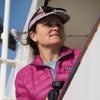

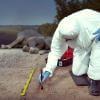











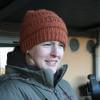
















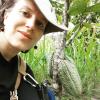







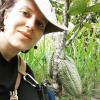









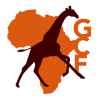






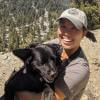



26 March 2024 2:11pm